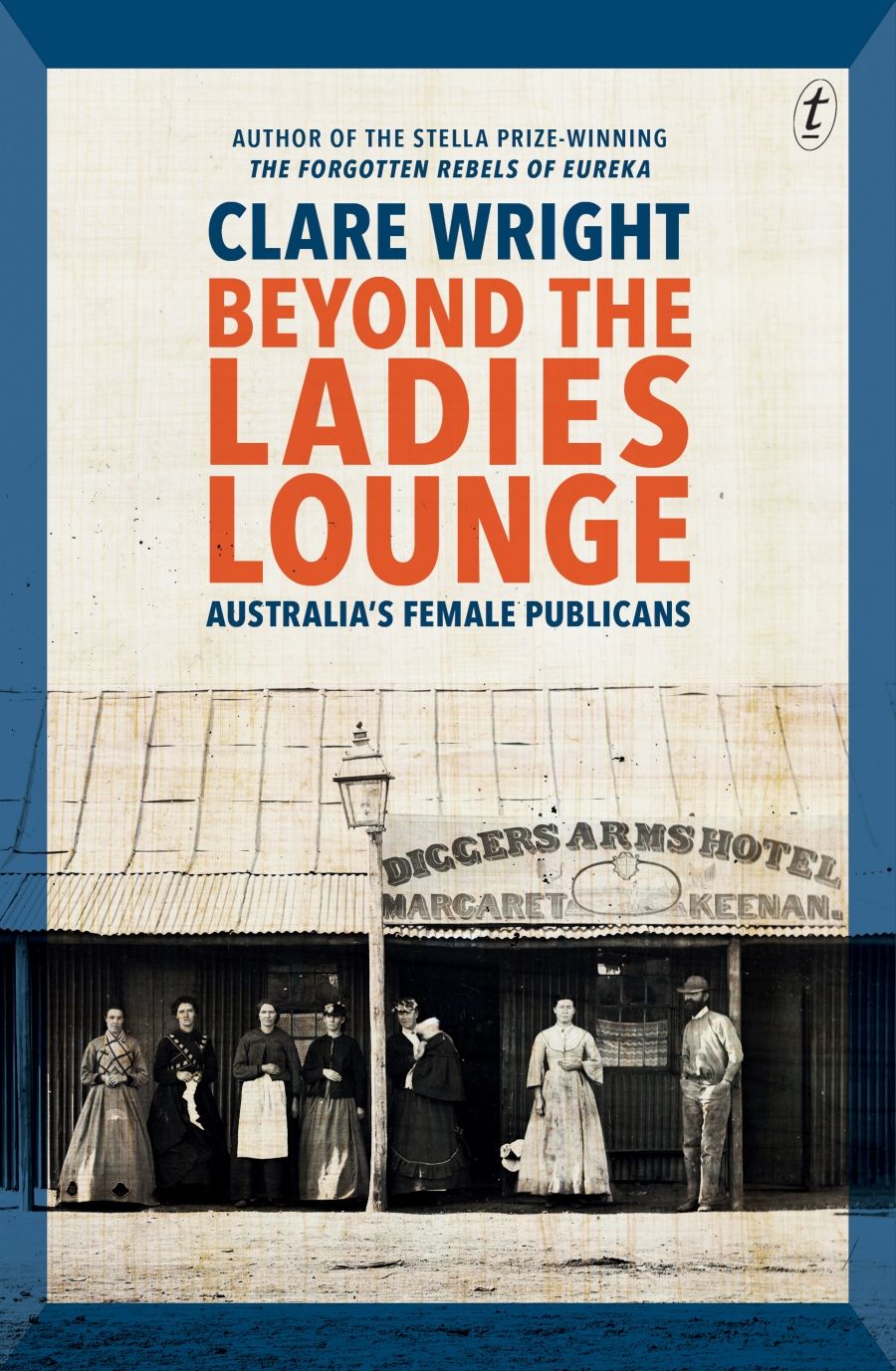
- Free Article: No
- Contents Category: Australian History
- Custom Article Title: Matrons behind the Bar
- Review Article: Yes
- Article Title: Matrons behind the Bar
- Online Only: No
- Custom Highlight Text:
Clare Wright’s Beyond the Ladies Lounge, a history of Australia’s female publicans, has been engulfed in a haze of marketing. Rarely has a thesis-turned-book attracted so much publicity. This book has been brilliantly promoted and has excited media attention.
Female publicans: it’s a great subject. Wright turns the spotlight on Australian pub culture and discovers women not just serving behind the bars but running the hotels. Apparently, this has always been the case. Her research reveals that as many as thirty per cent of Melbourne’s city and suburban hotels were licensed to women by 1889, and more than half a few decades later. Her work, therefore, upends both the view of the pub as a male stronghold and the contention that in the nineteenth and early twentieth centuries women had almost no self-employment opportunities. It also complicates the notion of separate spheres deployed by many gender historians as an analytical tool, where women are confined to the private sphere while men venture into the public domain.
- Book 1 Title: Beyond the Ladies Lounge
- Book 1 Subtitle: Australia's female publicans
- Book 1 Biblio: MUP, $34.95 pb, 240 pp
- Book 1 Cover Small (400 x 600):

- Book 1 Cover (800 x 1200):

Beyond the Ladies Lounge is an important contribution to Australian history. The book uses various sources to track female publicans, including licensing records and legislation, industry publications, newspapers, photographs, imaginative literature, bush ballads and interviews. Wright examines the structural and ideological factors that underlay women becoming hotel-keepers, and also the individual reasons for women choosing this career, thus giving weight to the role of historical agency. She contends that the legal framework of licensing facilitated the entry of women into hotel-keeping, and that they were accepted into the business and by the brewers because they were seen as a civilising influence: ‘In a relationship of mutual benefit, the presence of women legitimated the industry while the industry afforded women a legitimate vocation.’ Wright attempts to access the personal motivations and experiences of female publicans, in part through oral history, and concludes that hotel-keeping offered women a fulfilling and empowering position at a time when the opportunities for female employment were limited.
One of Wright’s central, and oft-repeated, arguments is that, despite other socio-economic transformations that acted to exclude women from the workforce, women could continue to be publicans because they conformed to middle-class standards of femininity in their roles as the respectable and genteel ‘matron[s] behind the bar’. Wright deliberately adopts the term ‘public housekeeper’ to encapsulate female publicans’ use of domestic skills in the labour force. An interesting analysis of the spatial politics of the pub as both family home and workplace adds complexity to the ideology of separate spheres: ‘Female publicans were “public characters” to the extent that they organised social networks, participated in civic affairs, signed contracts and leases, managed financial transactions and employed staff, yet they performed all these financially remunerated tasks from the “privacy” of their own homes.’ The fact that female publicans were considered, and represented themselves, as virtuous, sober and homely women is also cited to explain why they did not attract the attention of the temperance campaigners at the turn of the twentieth century, while barmaids did.
Beyond the Ladies Lounge is a solid work of social history – partly in the tradition of E.P. Thompson, in its ‘rescuing’ of female publicans from the ‘condescension of posterity’ and giving them their own voice. It has been well produced by MUP, and has an impressive bibliography and workable index. But overall it left me disappointed. It remains chained to the thesis it once was, while it has been marketed as a readable popular history. The academic requirements of a thesis demand a mass of evidence to support every claim, constant repetition of one’s main arguments, and reference to those scholars whose work you have built on or overturned. Such factors detract from popular history, and that is how this book has been packaged, with its references to Cheryl Barassi and Dawn Fraser on the back cover (who are mentioned, in passing, once and twice, respectively). The intricate details about licensing laws, the Licences Reduction Board and the like bog the reader down, as do the lists of questions to be addressed.
While undoubtedly parts of Wright’s thesis have been rewritten for publication, it is omissions not simply revisions that I would request, and a wider scope. Wright hints at the book she might have produced, stating in the preface that, while researching her PhD, her focus ‘shifted from a history of women and pubs generally, to a history of female publicans specifically’. It is the breadth of the former project that would have made the better book. The inclusion of more biographical material and personal anecdotes, while often anathema to a thesis, would have breathed life into this account and given a deeper sense of the women beneath the historical analysis. Surely Wright’s interviews with female publicans reaped some wonderful tales of witnessing life from behind the bar?
This may seem overly harsh. Beyond the Ladies Lounge is a fine scholarly work, and presumably was judged an outstanding PhD thesis. It just feels like a missed opportunity given Wright’s evident skills and the current vogue for narrative history among the reading public.


Comments powered by CComment